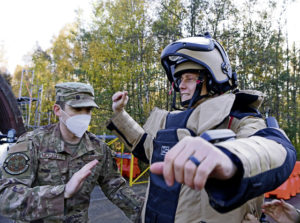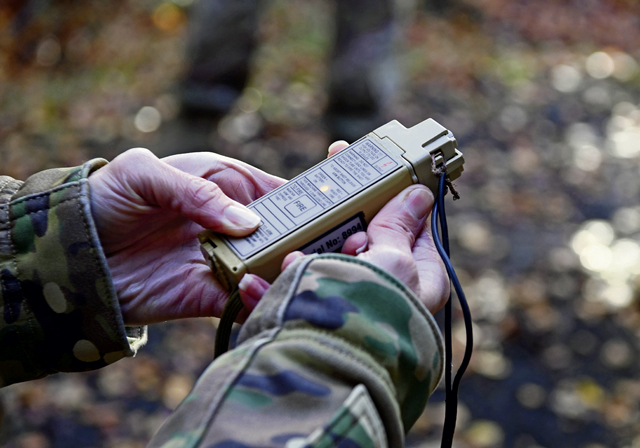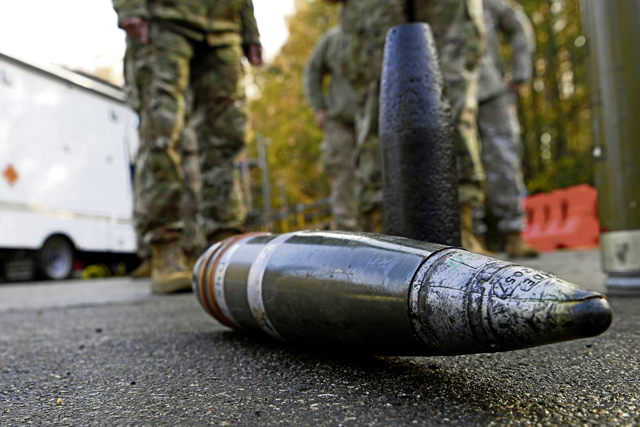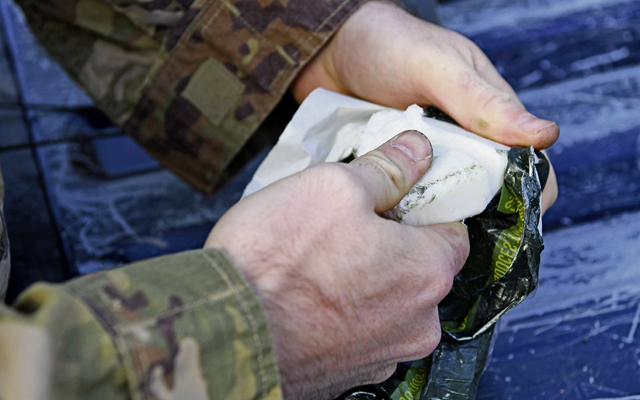
Members of the 786th Civil Engineer Squadron Explosive Ordnance Disposal Flight play a critical role in the disposal of ordnance from World War I and World War II throughout the Kaiserslautern Military Community.
In the past year, 786th CE EOD personnel have detonated 210 munitions, helping to maintain mission readiness at Ramstein AB as the Gateway to the World.
“As EOD [technicians] we are first responders to prevent mission stoppages when explosives are involved,” said Master Sgt. Anthony Scott Campbell, 786th CE EOD quality assurance section chief. “These stoppages could involve aircraft, munition accidents, improvised explosive devices or suspected improvised explosive devices, and unexploded ordnances from both world wars up to today.”
As a critical location in Europe, Ramstein AB provides an opportunity for members of the 786th CE EOD to provide training and engage with partner nations.
“Here at Ramstein AB we are fortunate to have opportunities to reach out and train with a host of different countries’ EOD personnel,” said Staff Sgt. Michael Long, 786th CE EOD flight non-commissioned officer in charge of equipment. “It allows us to learn and exchange new tactics and procedures with our NATO allies.”
The EOD career field within the U.S. Air Forces in Europe area of responsibility hosts unique challenges due to unexploded ordnance left over from World War II. It’s the EOD flight’s job to ensure those ordnance are secured and disposed of so mission-critical operations can continue unhindered.
“As the main hub for USAFE, it is important that the mission at Ramstein doesn’t stop,” Campbell said. “We do our part to keep the mission going by mitigating and neutralizing explosive hazards and ensuring aircraft can continue to provide mission critical operations by keeping runways and key locations free of explosive materials.”
Operations at Ramstein AB are vital to the success of the Air Force’s mission in Europe, the Middle East and beyond. It serves as a critical strategic location, which allows aircraft to move supplies and materials to service members who need them.
“Stoppages caused by explosive hazards could shut down the mission if we were not available to clear them,” Campbell said. “A few weeks ago we had a UXO from World War II that shut down one of the runways. Through our response we were able to resume normal operations in just a few hours.”
Because of the critical and dangerous nature of their work, the 786th EOD flight has a tight bond.
“I enjoy EOD for several reasons,” Long said. “We are such a small career field we are like our own family. The feeling of protecting personnel from potentially hazardous material and devices keeps me motivated to always better myself.”
The EOD flight works to ensure Ramstein AB remains free of UXOs. Their tireless work enables the Air Force to generate and employ air mobility and project power across air, space and cyber domains.












